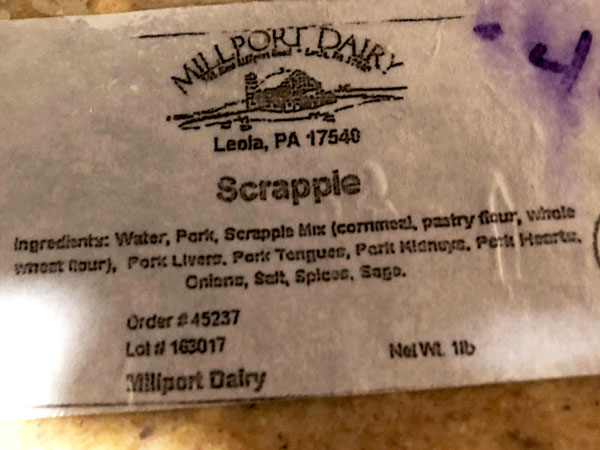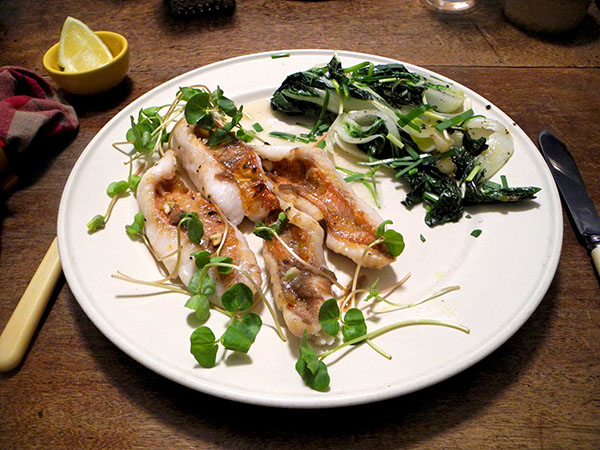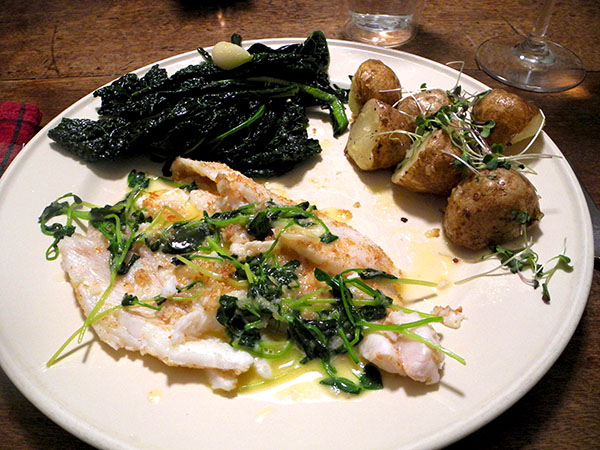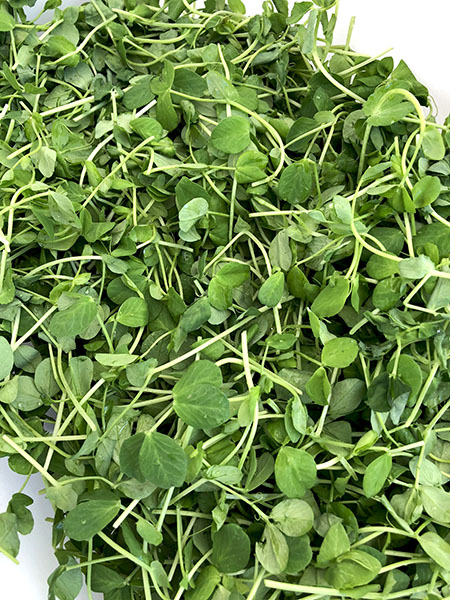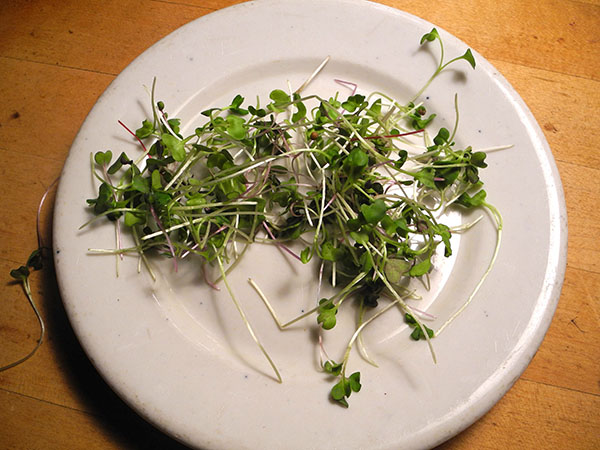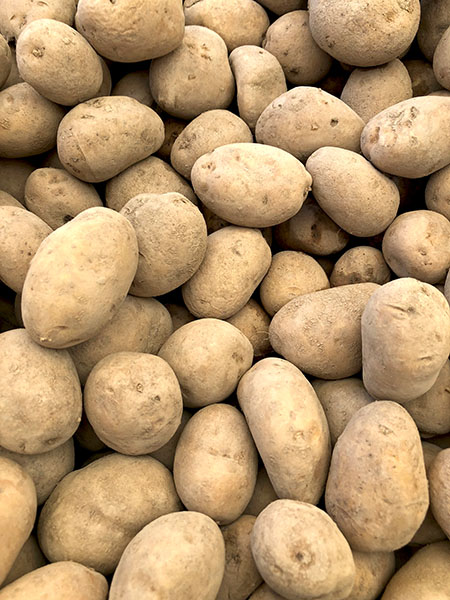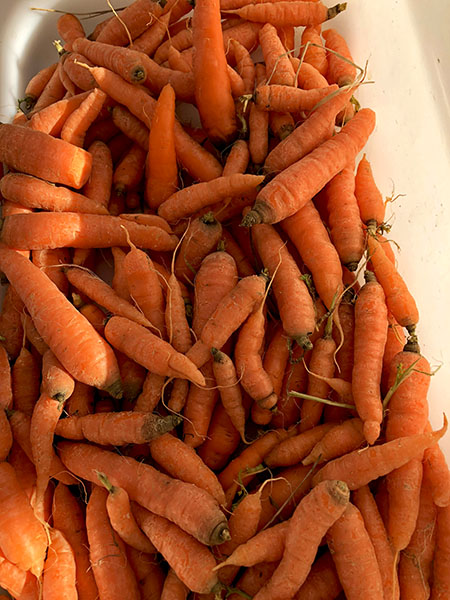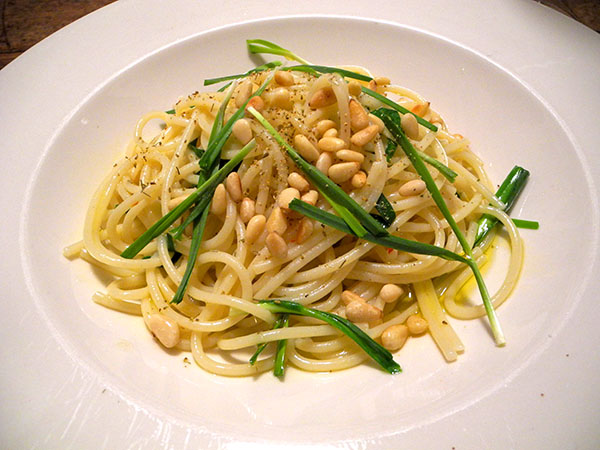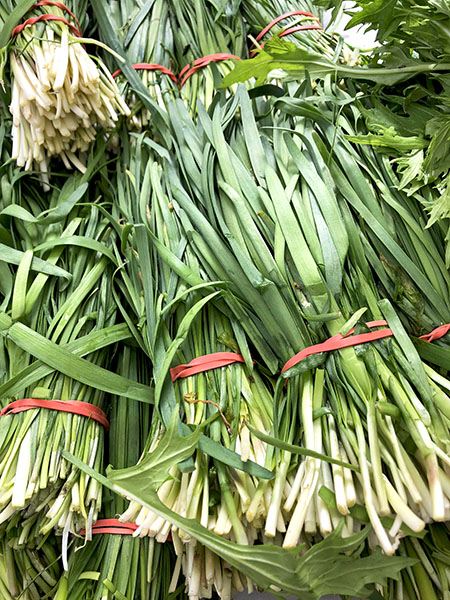
I slept late, and Monday is a slow Greenmarket day, so I decided that the better part of a creative foraging outing might take me to our neighborhood Whole Foods Market, which is only down the block. I almost never purchase an entrée their, but I make an exception for their salmon. It’s not local of course, but there was once a time when salmon flourished in our local waters. Effectively, unless it’s farmed (in areas much further north and east of New York and New England, or even still much further away, in the southeastern of southwestern Pacific), it has to have come from the Pacific northwest, but I foster the conceit that what we are enjoying is the bounty which has followed the reintroduction of this noble species into our local streams and coastal waters years from now.

The chard had come home with me from Union Square farmer’s stall on Saturday. It was obviously very fresh, because 2 days later it seemed to be in the same superb condition in which I had found it, and it was one as delicious as any I had ever prepared.
The potatoes, as they were potatoes, were less of a concern for absolute freshness, but I was happy that we would be able to enjoy the last of a bag I had purchased 12 days before.

- one fourteen-ounce fillet of Pacific coho salmon from Chelsea Whole Foods Market, the skin left on, halved, seasoned on both sides with sea salt and freshly-ground black pepper, the flesh side [CORRECTION: this should have read “the former skin side”, and in fact this time I incorrectly pressed the mixture on the flesh side] pressed with a mixture of ground coriander seeds, ground cloves, ground cumin, and grated nutmeg, sautéed in a little olive oil over a medium-high flame inside an enameled, oval cast iron pan over medium-high heat, the flesh side down, for 2 or 3 minutes or so, then turned over and cooked for another 2 or 3 minutes, finished on the plate with a little squeeze of organic lemon from Whole Foods Market and a drizzle of a good olive oil, garnished with micro buckwheat greens from Windfall Farms
- a few ‘Kennebec’ potatoes from Keith’s Farm boiled with a generous amount of salt until barely cooked through, drained, halved, dried while still inside the large still-warm vintage Corning Pyrex Flameware blue-glass pot in which they had cooked, tossed with some good Portuguese olive oil, sprinkled with sea salt and freshly-ground black pepper, arranged on the plates, where they were sprinkled with toasted homemade bread crumbs and garnished with micro buckwheat greens from Windfall Farms
- *a modest amount of rainbow chard (the apposite cost of this miracle vegetable when it is grown in early March suggests I use restraint), from Norwich Meadows Farm, purchased from their stall in the Union Square Greenmarket, wilted in a little olive oil in which 2 halved Rocambole garlic cloves from Keith’s Farm had first been heated and slightly softened, seasoned with sea salt and freshly-ground black pepper, and finished with a drizzle of the Portuguese olive oil and a bit of lemon juice
- the wine was a California (Sonoma) red, Jacqueline Bahue Cabernet Franc Sonoma Valley 2015, from Naked Wines
- the music was Handel’s 1729 opera, ‘Lotario‘ (Lothair), Alan Curtis conducting the ensemble, Il Complesso Barocco; the opera’s Wikipedia entry suggests that it was one of his least successful (one of the composer’s librettists, who did not have any part in this one, wrote “everyone thinks (Lotario) a very bad opera”), but the music is wonderful


